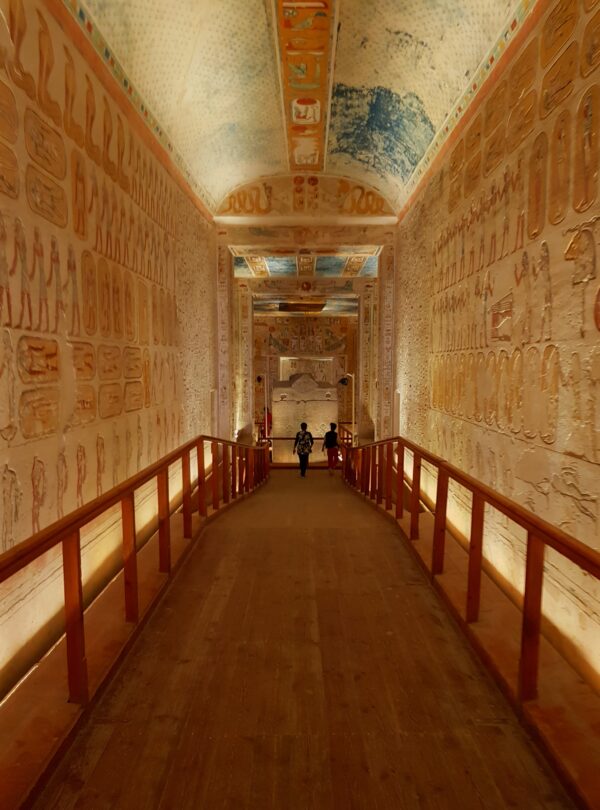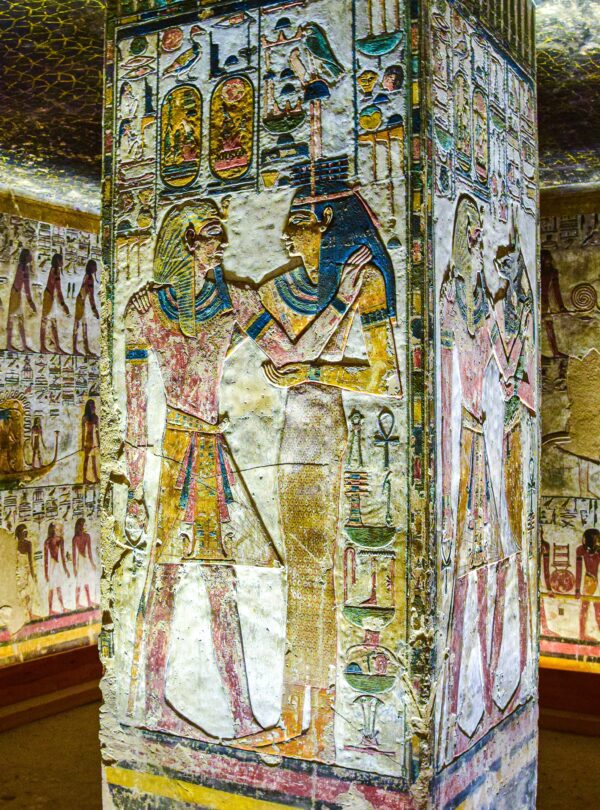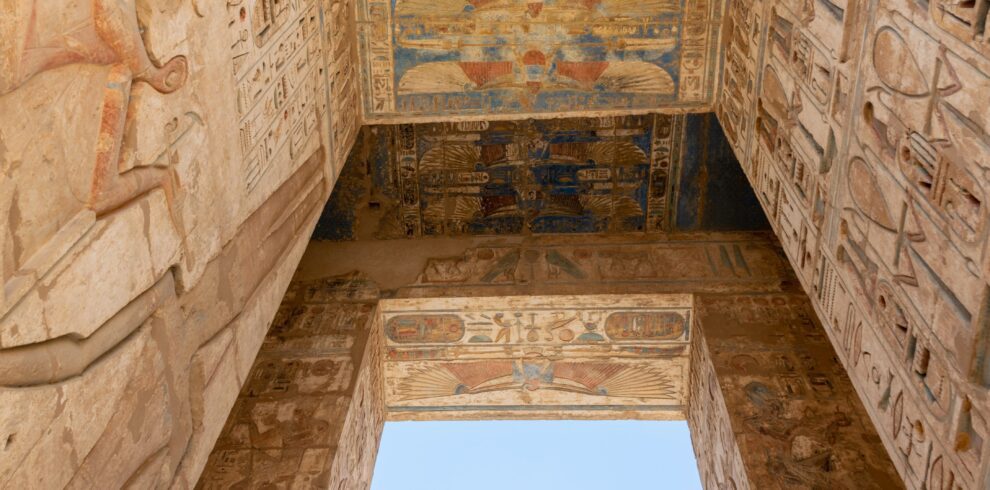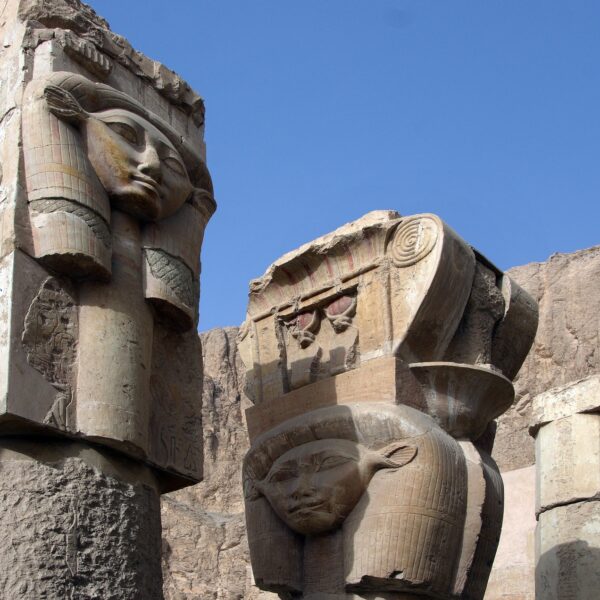The Top 10 Attractions in Luxor That You Must See

The History of Luxor City
Thebes (Luxor), the capital city of the Ancient Egyptian New Kingdom (1549–1069 BC), had a population of over a million people at its height. Military victories that extended their dominance south into Nubia, west along the Mediterranean, and east into present-day Syria making the pharaohs who ruled over this empire wealthy. The New Kingdom pharaohs were able to commission massive building projects in an effort to immortalize their authority through the structures they left behind thanks to their immense wealth and labor force.
At the site of ancient Thebes, where the enormous temple and burial complexes still stand on each side of the Nile, we still respect these pharaohs’ attempts to preserve their legacy today in Luxor. Today, Luxor city is frequently referred to as the “largest open-air museum in the world.” This name was given since the contemporary city is situated where ancient Thebes once stood. The Old Kingdom’s artifacts, which are still being uncovered today, have literally been erected on top of and around this structure. Luxor Temple and the enormous Karnak Temple Complex are two of Egypt’s most spectacular landmarks, both of which are surrounded by contemporary architecture. The juxtaposition between their old stone architecture and the contemporary buildings around them only serves to emphasize their effect.
1. Temple of Karnak
The Temple Complex of Karnak must be the most amazing and gorgeous structure among Luxor city’s numerous monuments. It is located on the east bank of the River Nile at Thebes near modern-day Luxor. One of the most popular ancient temples in Luxor city is the Karnak Temple. Only the Giza Pyramids outside Cairo receive more visitors than it, making it Egypt’s second-most popular archaeological monument. The Great Temple of Amun, the Temple of Khons, the Festival Temple of Tuthmosis III, as well as neighboring smaller temples and sanctuaries, are all located within its confines. The facility was not constructed according to one overarching plan. Instead, it shows the construction work of numerous succeeding monarchs who competed with one another to embellish and enlarge this vast national shrine, which under the New Kingdom became the most significant of Egypt’s temples.

2.Valley of the Kings
With Howard Carter’s 1922 discovery of Tutankhamun’s tomb, complete with all the wealth with which he had been buried, the modern myth of Egypt was born in the Valley of the Kings. As the treasures of Tutankhamun traveled the world and sparked fresh, widespread interest in Ancient Egyptian history, the reputation of that discovery marked the beginning of a new age in Egyptian tourism. On the western bank of the Nile River, close to Luxor, is where you’ll find the Valley of the Kings. It is the most well-known location due to the fascinating tomb collections and breathtaking ancient ruins. It is one of the most popular locations for learning about ancient Egyptian history because of its position.
The Valley of the Kings, which was tucked away between the jagged escarpments of Luxor’s West Bank, served as the ultimate resting place for the rulers of the 18th, 19th, and 20th dynasties. The tombs, which are covered in incredibly detailed, bright wall paintings, are typically everyone’s first stop while visiting the West Bank and are among the most popular tourist destinations in Egypt. The walls of the tombs were decorated with words and scenes that described this journey and provided guidance to the deceased on its itinerary since it was believed that the dead sailed through the underworld at night in a boat with the sun god.


3.Hot Air Balloon Ride over Luxor at Sunrise
In fact, it’s among the top locations in the world for hot air balloon rides. Here, balloon trips take off shortly after sunrise and float above the West Bank, with its lush farmland fields snuggled between the desolate escarpments, offering a bird’s-eye view of the region’s temples and tomb sites. In general, larger baskets carrying roughly 24 passengers plus the pilot are used for balloon group tours.

4.Temple of Deir al-Bahri (Queen Hatshepsut's Temple)
The Temple of Deir el-Bahri is superbly located on the West Bank, at the base of towering cliffs surrounding the desert hills, its light-colored, nearly white, sandstone standing out conspicuously against the golden yellow to light brown rocks in the background. The temple had been severely damaged by Tuthmose III when he inherited the throne, most likely because Hatshepsut had prevented him from becoming pharaoh, when it was discovered in the middle of the 19th century.
The only female pharaoh in ancient Egyptian history was Hatshepsut. After the passing of both her father, Tuthmose I, and her half-brother and spouse, Tuthmose II, who succeeded her father as king, she ascended to power during the New Kingdom. She first served as queen-regent to Tuthmose III, her husband’s son from a different wife, but managed to wrest the throne from him and retain control until her death. The fact that Hatshepsut was the only woman to rule Egypt is one factor in her reputation, but it is not the only one.

5.Felucca Ride to Banana Island
There is no better way to unwind in Luxor if you’ve had your fill of temples and tombs for the day than to take a felucca journey to Banana Island (especially at sunset). Sailing the five kilometers upriver from Luxor to this little, palm-fringed island is the ideal way to unwind after a busy day discovering the West and East Bank’s pharaonic treasures. Felucca rides are all about relaxing and taking in the Nile’s surrounding scenery as the captain lifts the sail and you float up the river.

6.Luxor Temple
Luxor Temple is a complex of ancient Egyptian temples that may be seen in Thebes, not far from Luxor city today, on the east bank of the Nile. Amenhotep III built the majority of the temple, which dates back to around 1400 BCE ; Tutankhamun, Horemheb, and Ramses II later added to it. One of the most popular ancient temples in Luxor and a major tourist destination is the Luxor Temple. The complex received the UNESCO World Heritage Site designation in 1979. It includes the deity chapels, along with their vestibules and auxiliary chambers, a sizable Hypostyle Hall, and an open Peristyle Court that was accessed from the north by a substantial colonnade, as are all Egyptian temples. The temple was converted into a church during the Christian era, and on the complex grounds, a mosque honoring a revered holy figure was constructed during the Islamic era.

7.Medinet Habu Temple
The Medinet Habu Temple was built in ancient Egypt to serve as Ramses III’s mortuary temple. It is situated roughly opposite the modern city of Luxor on the west bank of the Nile River. Covering an area of more than 66,000 square meters, it is the second-largest ancient Egyptian temple ever discovered. One of the six well-known ancient temples in Luxor is the Medinet Habu Temple. Numerous other historic buildings can be seen in Medinet Habu, the area where the temple is situated, but none of them are as impressive as the temple itself.
The temple is well known for its enormous sculptures of Ramses and its numerous, excellently preserved reliefs. The large hypostyle hall of the temple included a number of human skulls that were on exhibit when it was discovered by archaeologists. The skulls are believed to have belonged to prisoners and were displayed to show the pharaoh’s dominance over Nubia and Syria. The main temple area was constructed just like the Ramesseum and was also devoted to Amun. The reliefs in this area are among the nicest on the West Bank.

8.Edfu Temple
Near the modern city of Edfu, on the west bank of the Nile River, is the ancient Egyptian religious temple known as Edfu Temple. The main god, Horus, was honored in the temple, which was constructed between 237 and 57 BC. It is the most intact ancient Egyptian shrine yet found. The majority of the Edfu Temple is still standing today. The complex was taken over by the Romans during that time, who later abandoned it. Only the upper portions of the temple’s pylons were visible above the sand when Edfu Temple was unearthed in 1738 because the rest of the structure had been completely covered by eroding desert sand and silt that the Nile had left behind. Edfu Temple also referred to as the Temple of Horus, is a popular tourist destination. Despite not being in Luxor, the temple is frequently cited as one of the best in the city. The majority of visitors make the two-hour trip from Luxor to the site.

9.Colossi of Memnon
Most visitors to the West Bank first notice the Colossi of Memnon. These enormous statues are situated alongside the major road that travels from the Al-Gezira neighborhood of Luxor on the west bank of the Nile. They were previously stationed at the entrance to the king’s temple, of which there are only faint remnants. In the hills around Edfu, rough, yellowish-brown sandstone was quarried to make them. They show Amenophis III seated on a throne with a cube shape.
They gained notoriety in antiquity because of a strange sound that was released from one of them every sunrise. There is no way to corroborate this since the sound ended millennia ago, but scientists currently believe that it was created by air moving through stone pores as it warmed in the sunlight. Regardless of its origin, the sound gave the sculptures their name by leading the Greeks to assume they were representations of Memnon, the immortal. Compared to its neighbor to the north, the South Colossus is better conserved. Its base is partially covered in sand and it is 19.59 meters high. Its overall height must have been around 21 meters, including the crown it formerly wore but has now lost.
You can make reservations for your vacation to Luxor from here

10.Valley of the Queens
The majority of the tombs in the West Bank’s Valley of the Queens date from the 19th and 20th dynasties. There are currently records of about 80 graves, the majority of which were discovered by an Italian expedition under the direction of E. Schiaparelli between 1903 and 1905. Many of the tombs are incomplete, unadorned, and resemble nothing more than rock caverns. Few reliefs or engraved inscriptions may be found, and paints on stucco make up the majority of the artwork. The legendary Tomb of Queen Nefertari, which was only recently reopened in 2016, is one of the groups of four tombs that are available for public inspection, making the trek here well worth it.
The best of the many tombs in the West Bank is thought to be the Tomb of Queen Nefertari, Wife of Ramses II. The chambers here are decorated with brilliant, intricately detailed, and vibrantly colored scenes that honor Nefertari’s fabled beauty. The best of the three other tombs that can be seen here is the Tomb of Prince Amen-her-khopshef, whose chamber wall paintings have retained their colors beautifully, although the pictures in the Tomb of Queen Titi are more faded than those in Khaemwaset. In the field of archaeology, there is disagreement about Titi’s husband.

